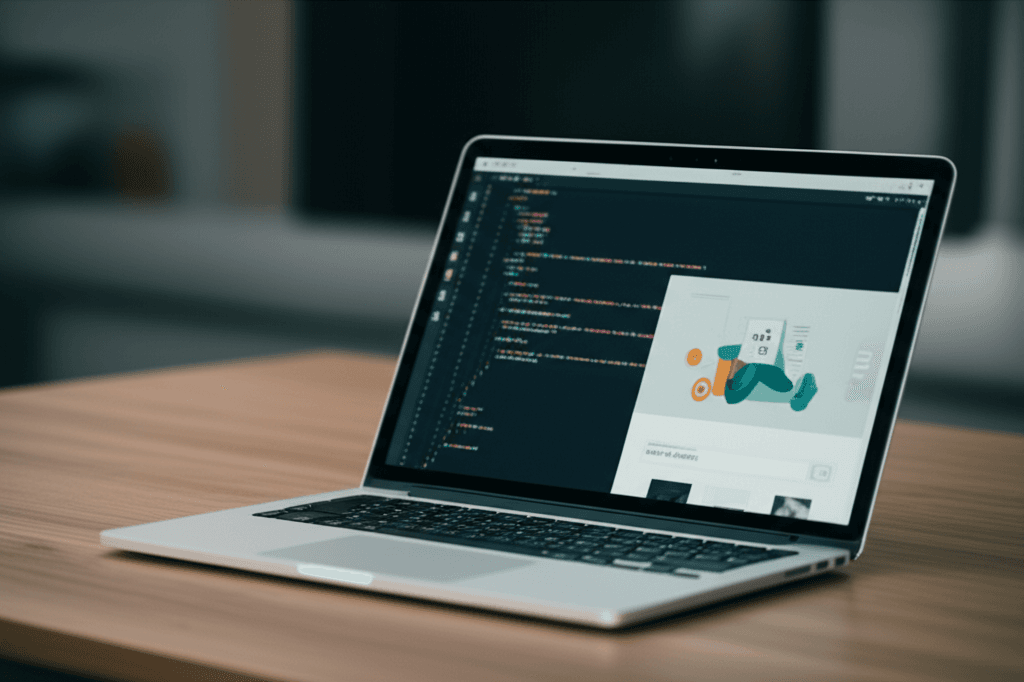Building a modern portfolio website is an essential skill for any aspiring web developer. This guide walks you through creating a sleek, interactive portfolio clone using HTML, CSS, JavaScript, and GSAP for smooth animations. Whether you’re learning full-stack development or looking to showcase your projects, this tutorial provides practical insights and code examples.
A portfolio website serves as your digital resume, highlighting your skills, projects, and professional background. By building a clone, you gain hands-on experience with front-end technologies while creating a functional piece for your own use.
Key Technologies Used:
HTML for structure, CSS for styling, JavaScript for interactivity, and GSAP (GreenSock Animation Platform) for advanced animations.
Features of the Portfolio Clone:
Custom Mouse Cursor: A small white circle follows the mouse cursor with scaling effects for a dynamic user experience.
Page Load Animations: Elements such as the navigation bar, headings, and footer fade in and slide into place when the page loads.
Interactive Hover Effects: Hover over skills, projects, or certifications to reveal images with smooth fade, movement, and rotation animations.
Responsive Menu: A dropdown navigation menu toggles with smooth transitions when clicking the MENU button.
Minimalist Design: Dark theme with uppercase typography and clean layouts for a professional appearance.
Step-by-Step Development Process:
Start by setting up the HTML structure. Define sections for the hero, skills, projects, about, and footer. Use semantic tags like header, main, and footer for better SEO.
Style with CSS to achieve a dark, minimalist design. Focus on responsiveness using media queries to ensure the site looks good on all devices.
Add interactivity with JavaScript. Implement the custom mouse cursor by tracking mouse movement and applying scaling effects.
Use GSAP for animations. Animate text, navbar, and footer elements on page load with fade and slide effects.
Create hover effects for project sections. When users hover over items, display related images with smooth transitions.
Test the website across different browsers and devices to ensure compatibility and performance.
Code Example for Custom Mouse Cursor:
Here is a simple JavaScript snippet to create a custom mouse follower:
const cursor = document.querySelector(‘.cursor’);
document.addEventListener(‘mousemove’, (e) => {
cursor.style.left = e.pageX + ‘px’;
cursor.style.top = e.pageY + ‘px’;
});
Benefits of Building a Portfolio Clone:
Improves HTML, CSS, and JavaScript skills through practical application.
Demonstrates ability to create modern, animated web interfaces.
Provides a reusable template for your own portfolio or client projects.
Enhances understanding of GSAP for complex animations beyond CSS capabilities.
Tips for Optimization:
Minify CSS and JavaScript files to improve loading times.
Use lazy loading for images to enhance performance.
Ensure all interactive elements are accessible via keyboard for better SEO and user experience.
Test animations on lower-end devices to maintain smooth performance.
By following this guide, you can build a professional portfolio website that showcases your front-end development skills. This project not only reinforces your technical knowledge but also results in a tangible asset for your career. Experiment with different designs and animations to make it uniquely yours.
For more web development tutorials and project ideas, explore related resources and continue practicing with increasingly complex projects. Happy coding!

Leave a Reply